Smartwatches Revolutionizing Seizure Detection
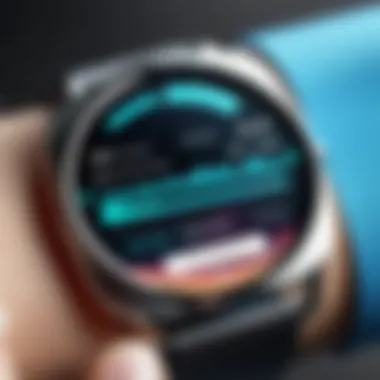
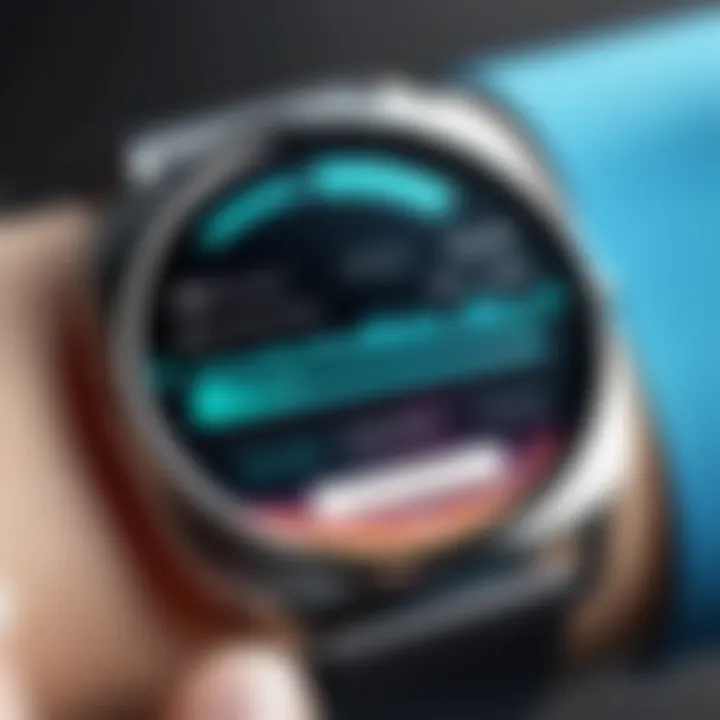
Intro
The integration of technology into healthcare has opened new avenues for improving patient outcomes. Among these advancements is the use of smartwatches as devices capable of detecting seizures. The goal of such technologies is not merely to provide convenience but to enhance the quality of life for those living with epilepsy and similar conditions. This section introduces the various technologies involved in seizure detection smartwatches and underscores the importance of understanding their capabilities and implications.
These devices harness a variety of sensor technologies and machine learning algorithms to monitor physiological data. This monitoring can predict seizure events, giving users an early warning. Such innovation can significantly alter daily life for users, offering a sense of security and empowerment.
In the subsequent sections, we will explore how these smartwatches function, the potential benefits they offer, the challenges they face in the market, as well as the ethical considerations regarding data privacy. This examination presents a comprehensive view of smartwatches in the context of seizure detection and their broader impact on healthcare.
Technology Insights
Latest Tech Trends
In recent years, the smartwatch industry has rapidly evolved, especially in the realm of health monitoring. Companies like Apple, Samsung, and Fitbit have begun incorporating advanced sensor technologies into their wearables. Features such as heart rate variability, accelerometry, and electrodermal activity measurements are becoming standard in modern devices. These elements are crucial for detecting patterns that may indicate a seizure.
Innovation in Tech
The use of artificial intelligence in these devices marks a significant leap forward. Machine learning algorithms analyze collected data to identify unusual patterns in user behavior that may precede a seizure. This predictive capability can lead to timely intervention, potentially reducing the severity of seizures or even preventing them.
Product Reviews
Smartwatches such as the Apple Watch Series 8 and Fitbit Sense are laying the groundwork for this technology, showcasing their ability to track health metrics with increasing accuracy. Both devices not only monitor heart rates but also enable users to log seizure events, offering valuable data for healthcare providers to analyze.
"The combination of real-time monitoring and historical data is essential in managing epilepsy effectively."
Implications for Healthcare
The implications of introducing smartwatches as seizure detection devices into healthcare are profound. These devices improve the immediacy of care provided to individuals experiencing seizures. Continuous monitoring allows for quicker response times, which can be critical in emergency situations.
Moreover, the data collected can provide deeper insights into seizure patterns, helping medical professionals tailor treatment plans more effectively.
Understanding the challenges and ethical considerations surrounding these devices is equally important. Addressing user concerns about data privacy and the security of health information is paramount to gaining widespread acceptance. In this evolving field, it is essential to strike a balance between technological advancement and ethical responsibility.
As technology continues developing, so too will the capabilities of smartwatches. The potential to revolutionize how we monitor and respond to seizure events is significant. This ongoing discussion around smartwatches and healthcare technology needs careful attention as we look to the future.
Prelude to Smartwatch Technology
The integration of smartwatch technology into daily life marks an important evolution in personal health monitoring. This section introduces the foundations of smartwatches, emphasizing their role and significance in advancing medical care, particularly for individuals with health concerns like epilepsy. Understanding this technology allows for a greater appreciation of its potential benefits, limitations, and ethical considerations.
The Evolution of Wearable Devices
Wearable devices have undergone a substantial transformation since their inception. In the early stages, devices like pedometers focused solely on tracking physical activity. However, the landscape of wearables expanded rapidly, integrating health-monitoring features and connectivity with smartphones.
Smartwatches emerged from this trend, combining the functionalities of smartphones with advanced sensors. These devices can now measure heart rates, monitor sleep patterns, and track other vital signs. This evolution is critical in understanding how smartwatches became viable tools for seizure detection. With advancements in sensor technology and the development of sophisticated algorithms, smartwatches are now able to detect physiological changes that may precede a seizure.
Overview of Smartwatch Features
Smartwatches are equipped with a multitude of features, essential for their role as health monitoring devices. Key features include:
- Real-time Health Monitoring: These devices can constantly track heart rate, activity levels, and stress indicators.
- Connectivity: Smartwatches sync with smartphones to provide notifications, enhancing user navigation through applications.
- GPS Capabilities: This feature helps users track locations and can be critical for alerting emergency contacts during a seizure.
- Health-focused Applications: Many smartwatches offer applications designed specifically for health management. These include seizure-tracking tools applicable for individuals with epilepsy.
The symbiosis of these features cultivates an environment wherein individuals can expect timely alerts and data-driven insights into their health. As we further explore smartwatches as seizure detection devices, it is crucial to comprehend these foundational characteristics, which underpin the technology's functionality and relevance.
Understanding Seizures
Understanding seizures is crucial in the context of smartwatches equipped for detection. Seizures are often unpredictable, leading to significant challenges for those who experience them and for their caregivers. In-depth knowledge about the types of seizures, their characteristics, triggers, and the overall impact on daily life helps in developing better tools for management and detection. Smartwatches as these devices can offer valuable real-time monitoring, aiding in the recognition of seizure patterns or potential triggers, which is essential for enhancing patient safety and quality of life.
Types of Seizures and Their Impact
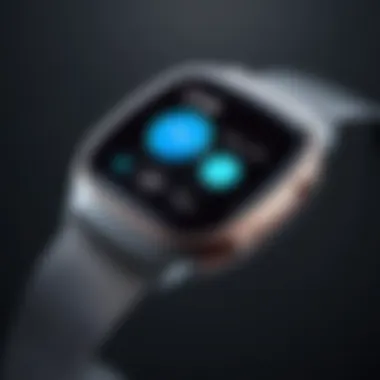
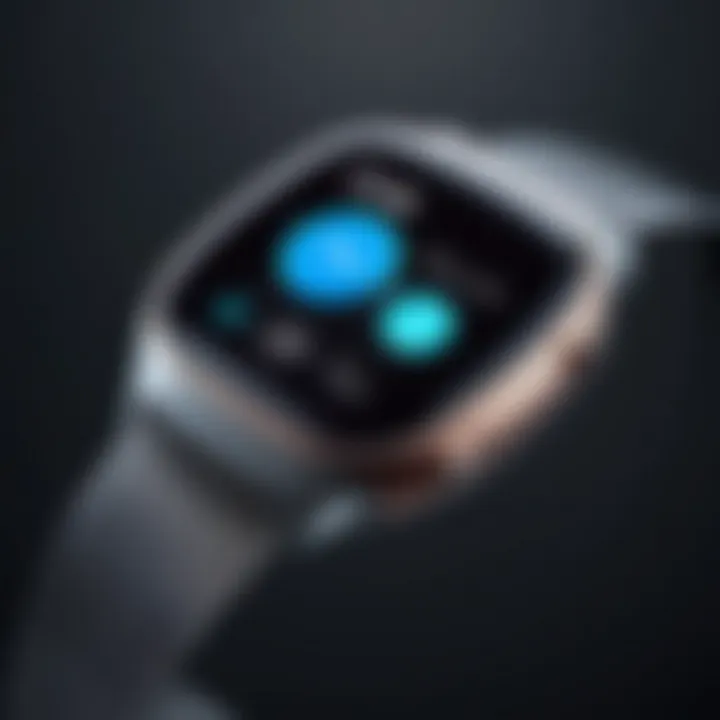
Seizures can be categorized into several types, each with distinct features. Broadly, seizures fall into two main groups: focal seizures and generalized seizures.
- Focal Seizures: These originate in one area of the brain and may manifest in various ways. Symptoms can include unusual movements, sensations, or emotions. Focal seizures can further be divided into simple focal seizures, where awareness remains intact, and complex focal seizures, which impair awareness.
- Generalized Seizures: These involve both hemispheres of the brain from the onset. They usually result in a loss of consciousness and include types like tonic-clonic seizures, absence seizures, and myoclonic seizures. Each of these can severely affect the individual, leading to a loss of control over their body and potential injury.
The impact of seizures goes beyond the physical symptoms. People living with epilepsy often deal with psychological aspects like anxiety and fear regarding the unpredictability of their condition. Smartwatches can play a pivotal role in alleviating some of these concerns by providing alerts and data collection regarding the occurrence of seizures, allowing for timely intervention when necessary.
Understanding Epilepsy
Epilepsy is a neurological disorder characterized by recurrent seizures. This condition affects people of all ages and can have various underlying causes, including genetic factors, brain injuries, or strokes. Approximately 50 million individuals worldwide are affected by epilepsy, highlighting its significance as a public health concern.
Understanding epilepsy involves recognizing its classification, which includes idiopathic epilepsy, symptomatic epilepsy, and cryptogenic epilepsy. Each type requires different approaches for management and treatment.
Moreover, the societal implications of epilepsy cannot be overlooked. Stigmas and misconceptions surrounding the disorder often influence the quality of life for those affected. By introducing technological tools like smartwatches, there is potential for improving the public understanding of epilepsy. Enhanced awareness may foster acceptance and support, helping individuals integrate better into society.
In summary, recognizing the nuances of seizures and epilepsy is integral to optimizing the effectiveness of smartwatch technology as a seizure detection device. Knowledge in these areas helps to inform the development of tailored features in smartwatches that address the unique needs of users.
Mechanics of Seizure Detection Technology
The field of seizure detection technology within smartwatches is not just a passing trend; it signifies an essential step forward in how we monitor health. This section will examine the mechanics behind this technology, illustrating why these systems are crucial for individuals prone to seizure activity.
Sensor Technologies in Smartwatches
Smartwatches equipped for seizure detection rely on various advanced sensor technologies. These sensors gather vital physiological data that can indicate an impending seizure. The commonly used sensors include accelerometers, gyroscopes, and heart rate monitors.
- Accelerometers detect movement and can identify abnormal shaking patterns.
- Gyroscopes measure orientation, helping to assess the position of the body before and during a seizure.
- Heart rate monitors track changes in heart rate variability, which can precede seizure activity.
This data is critical as it allows the smartwatch to effectively distinguish between normal movement and potential seizure activity. The integration of these sensors creates a robust surveillance system capable of alerting caregivers or medical personnel in real-time.
The Role of Machine Learning
Machine learning plays a pivotal role in enhancing the efficacy of seizure detection in smartwatches. By employing algorithms that learn from historical data, these devices can gradually improve their predictive accuracy.
The process typically involves:
- Data Training: The algorithms are trained on datasets that consist of both normal and seizure-related activities.
- Pattern Recognition: With continuous learning, the device can identify patterns that often precede seizures.
- Alerts and Notifications: When a possible seizure pattern is detected, the smartwatch can instantly notify the user or those around him or her.
This learning capability transforms raw sensor data into actionable insights, identifying critical trends that might go unnoticed. As the technology evolves, its predictive capabilities are likely to improve, thus providing essential support for users.
Data Collection and Analysis
Data collection is an ongoing process in smartwatches designed for seizure detection. These devices continuously monitor and record real-time data from a variety of sensors. The amount of data collected is substantial, which can pose challenges, but it can also lead to insightful analysis if managed correctly.
Key components of this process include:
- Storage and Management: Effective data storage solutions are necessary to ensure that users can access their health data over time.
- Analysis Tools: Tools that help in analyzing the data can reveal trends and anomalies, which may inform medical professionals about a user's seizure patterns.
- User Interface: A clear and intuitive user interface ensures that users can easily navigate their health data and understand the implications of collected information.
By harnessing sophisticated data collection and analysis methods, smartwatches are positioned not merely as monitoring devices but as vital components of a comprehensive health management system. This is particularly important for those living with epilepsy, as it informs treatment decisions and improves overall patient safety.
Ultimately, the mechanics of seizure detection technology in smartwatches are transforming how individuals manage their health, shifting the focus toward predictive monitoring and proactive care.
Smartwatches Currently Available for Seizure Detection
The emergence of smartwatches as seizure detection devices has created a pivotal change in how epilepsy is managed. These devices are more than mere fitness trackers; they represent a melding of technology and healthcare that provides tangible benefits for users. Features such as real-time monitoring and alerts are essential for individuals who experience seizures, offering them a layer of safety and support that was previously unavailable. Understanding the available options is crucial for both prospective users and caregivers.
Comparative Analysis of Leading Products
Diving into the comparative analysis of available smartwatches reveals a range of technologies designed for seizure detection. Leading products include:
- Apple Watch Series 8: This model incorporates advanced sensors capable of monitoring heart rate variability, which can indicate seizure activity. Users can benefit from the integrated medical alerts that notify emergency contacts.
- Fitbit Sense: While primarily a fitness tracker, the Fitbit Sense offers stress management tools that can help users identify triggers related to their seizures. It provides many insights into health metrics but may not be solely focused on seizure detection.
- Samsung Galaxy Watch 4: Known for its ECG monitoring, this smartwatch can also track unusual heart rhythms. However, its effectiveness in detecting seizures specifically is still under evaluation in broader studies.
- Empatica Embrace2: Unlike the other models, the Embrace2 is explicitly designed for seizure detection. It uses a combination of accelerometer and electrodermal activity sensors to identify seizures and alert caregivers immediately.
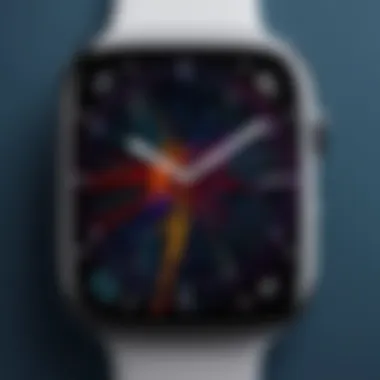
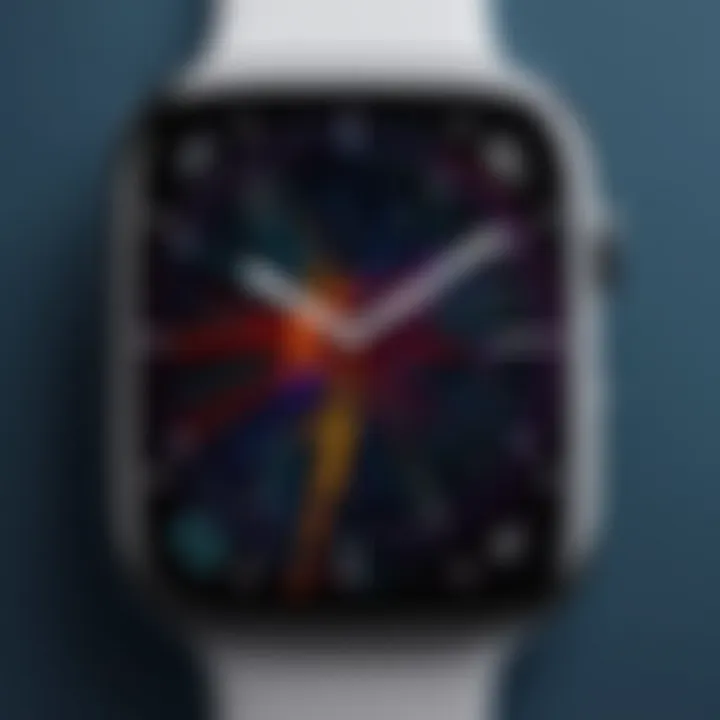
When considering these products, one must look at the accuracy and reliability of seizure detection, integration with other health data, and user-friendly interfaces.
User Experiences and Feedback
User experiences surrounding these smartwatches have been varied, yet informative. On platforms such as Reddit and Facebook, communities share their stories about how these devices have changed their lives or the lives of their loved ones. Common feedback includes:
- Peace of Mind: Users often express how these devices allow them to engage in daily activities with reduced anxiety about potential seizures.
- Functionality: Some report that the alert systems work effectively and notify caregivers promptly during an episode. However, there are instances of false positives that can frustrate users.
- Combining Data: A lot of users appreciate the integration of other health metrics that smartwatches provide. They like having a comprehensive view of their health, which aids in managing epilepsy alongside other conditions.
"For me, the ability to have alerts sent to my family during a seizure gives me a sense of freedom to live my life more fully."
However, there are also critiques, especially regarding battery life and the need for regular updates. Users desire continuous improvements in algorithms for better seizure detection capabilities.
In summation, the landscape of smartwatches available for seizure detection is rapidly advancing. With products like the Empatica Embrace2 leading the charge, individuals living with epilepsy are experiencing tangible enhancements in their safety and quality of life. Understanding user experiences provides invaluable insights for further development in this essential area of health tech.
Potential Benefits of Seizure Detection Smartwatches
The introduction of smartwatches designed for seizure detection offers various advantages that could have a transformative effect on the well-being of individuals with epilepsy. This technology not only enhances safety but also addresses significant quality-of-life issues faced by patients. By focusing on these aspects, we can appreciate the true value these devices bring to users and their families.
Improving Patient Safety
One of the primary benefits of seizure detection smartwatches is their potential to improve patient safety. Many individuals with epilepsy experience unpredictable seizure events, which can occur at any moment, often resulting in injury. Smartwatches equipped with detection algorithms can monitor physiological markers, such as heart rate variability and movement patterns, to identify signs of a seizure as they begin. When these signs are detected, the watch can alert the user or designated contacts, allowing for timely intervention.
This proactive approach can be particularly vital in preventing injuries. Users can receive assistance quickly, which is especially important in high-risk situations, such as driving or swimming. Additionally, by providing alerts to caregivers or medical professionals, the watches enhance the overall safety net for patients.
"Smartwatches are not just devices; they can be life-saving tools for those at risk of seizures."
Moreover, consistent monitoring leads to better data collection for healthcare providers, facilitating the customization of treatment plans. Over time, such tailored interventions can improve the management of epilepsy on an individual basis.
Enhancing Quality of Life
In addition to promoting safety, seizure detection smartwatches can significantly enhance the quality of life for users. Living with epilepsy often involves anxiety related to seizure unpredictability. By incorporating a seizure detection device, individuals may experience a reduction in this anxiety. The mere presence of a smartwatch that can potentially alert others provides a sense of comfort and security.
Furthermore, these devices can help users engage more fully in everyday activities. Knowledge that safety measures are in place may encourage individuals to participate in social events, pursue hobbies, or even travel, which they might have previously avoided out of fear.
Apart from personal security, these smartwatches often come with additional health and fitness features. Tools for tracking exercise, monitoring sleep quality, and managing stress contribute positively to overall health. A better lifestyle can not only minimize seizures but also promote well-being.
Challenges and Limitations
The advent of smartwatches as seizure detection devices has raised important discussions around their efficacy, implementation, and societal acceptance. While these wearables hold promising potential, understanding the challenges and limitations they face is crucial. This examination identifies critical aspects that may hinder the widespread use of seizure detection technology.
Accuracy and Reliability of Detection
Accuracy is a foremost concern in the realm of seizure detection technology. For individuals relying on these devices, false positives and false negatives can lead to serious implications. A false positive may cause unnecessary alarm, resulting in anxiety and possibly leading to unwarranted medical interventions. Conversely, a false negative—failing to alert a user to an impending seizure—could have dire consequences, such as injury or even loss of consciousness during a seizure episode.
Various factors affect the accuracy and reliability of these smartwatches. The sensors implemented in devices often measure physiological signals such as heart rate variability, body temperature, and movement patterns. However, their performance can be influenced by external variables such as environment, user activity level, and even individual health conditions. These nuances can lead to variations in detection capabilities across different users.
Moreover, the algorithms that underpin data interpretation must continuously adapt and improve. Machine learning plays a pivotal role in enhancing detection accuracy. Yet, the training datasets used to teach these algorithms need to be robust and representative.
"While technology evolves rapidly, underappreciating the need for rigorous testing and validation may compromise patient safety."
User Compliance and Acceptance
User compliance is another significant factor impacting the effectiveness of smartwatches in seizure detection. The reliability of these devices hinges not only on their technology but also on how consistently users wear and engage with them. If an individual does not wear the device as intended or fails to utilize its features, the potential for timely alerts diminishes dramatically.
Several factors can affect user compliance. The comfort and appeal of the smartwatch design are essential. Devices that are bulky or perceived as unattractive may lead to resistance among users. Additionally, the perceived necessity of the technology plays a role. Users who do not experience frequent seizures may deem such devices unnecessary, leading to a lack of motivation to wear them.
Furthermore, the cultural context influences acceptance. Attitudes towards wearable health technology vary across populations. While some embrace the integration of technology in health, others may harbor skepticism, questioning data privacy or the necessity of monitoring. This imperative to foster a culture of acceptance combined with addressing pragmatic challenges is vital for the successful adoption of seizure detection technology.
Ethical Considerations


The integration of smartwatches into healthcare, particularly for seizure detection, brings forth several ethical considerations that warrant diligent examination. As technology permeates personal health monitoring, it raises critical questions about privacy, consent, and the autonomy of users. This section focuses on the implications of these concerns and how they affect both the users and the broader healthcare system.
Data Privacy Concerns
Data privacy is paramount in the realm of wearable devices. Smartwatches collect a substantial volume of sensitive information, including physiological data that reflects the user's health status. This data can be particularly sensitive for individuals with epilepsy, who may already experience stigma associated with their condition.
Maintaining data privacy involves ensuring that information is securely stored and accessed. Users must be aware of who has access to their data and how it may be used. For instance, companies that develop these smartwatches must have robust policies in place to protect user data from breaches and unauthorized access. Additionally, transparency in data handling practices can foster trust between users and manufacturers.
"As we embrace technology, we must equally prioritize the protection of sensitive health information in the digital age."
Smartwatch manufacturers should also consider how aggregated data might be shared with third parties. There is a risk that valuable health insights could be exploited for commercial purposes rather than enhancing patient care. Thus, it is crucial for companies to prioritize ethical guidelines that prevent misuse of collected data.
Informed Consent and User Autonomy
Informed consent is vital for individuals using smartwatches for seizure detection. Users must fully understand what they are agreeing to when they provide their data. The process of obtaining informed consent should be clear and thorough, outlining how their information will be collected, used, and shared.
Moreover, user autonomy must be respected. Individuals should have the right to withdraw their data at any point without penalties. This empowers users to take control of their health information and ensures that they feel safe in using such technology.
Educating users about their rights and responsibilities is crucial. Companies should provide clear guidelines and accessible educational resources. This will help users make informed decisions about their engagement with the technology and understand its implications.
Future Directions of Seizure Detection Technology
The landscape of seizure detection technology is evolving rapidly, particularly with the integration of smartwatches. As these devices are becoming more sophisticated, their future holds great promise. This section discusses the importance of advancements in sensor technology and how smartwatches can potentially integrate into broader health monitoring systems. These innovations can significantly change the management and understanding of epilepsy.
Advancements in Sensor Technology
Recent developments in sensor technology are remarkable. Modern smartwatches are equipped with a variety of sensors capable of tracking physiological signals. Features such as accelerometers, heart rate monitors, and electrodermal activity sensors are now standard. These sensors can detect changes that may precede a seizure, providing crucial data for predictive analytics.
Moreover, advancements in miniaturization and accuracy enhance these sensors' effectiveness. For example, next-generation wearable devices might utilize biosensors that can monitor biomarkers indicative of an impending seizure. These improvements lead to better data reliability, which is essential in medical applications.
New technologies, such as graphene-based sensors, are being researched. These devices could provide faster and more precise readings of electrical activity in the skin. Enhanced data collection will facilitate machine learning algorithms, which in turn will refine detection capabilities over time. The importance of ongoing research in this area cannot be overstated, as these advancements could potentially lead to earlier and more accurate seizure predictions.
Integration with Broader Health Monitoring Systems
Integrating smartwatches with broader health monitoring systems represents another significant step forward. As healthcare increasingly emphasizes a holistic approach, interconnected devices can offer a more comprehensive picture of a patient’s well-being. Smartwatches could sync with health records stored in cloud-based systems, allowing doctors to gain real-time insights.
Such integration could involve various health parameters, from sleep patterns to stress levels. A smartwatch might detect a rise in stress that correlates with seizure activity, flagging this connection for medical professionals. This type of data-driven care could enhance individual treatment plans.
Furthermore, integration with other devices such as blood glucose monitors or fitness trackers could provide a more rounded health assessment. The implications of this are profound: patients could receive tailored advice based on comprehensive data, enabling proactive management of their conditions. This synergy may improve patient outcomes significantly and can lead to better overall public health management.
"The future of seizure detection technology lies not only in the devices themselves but also in how they connect and communicate within an ecosystem of health management."
In summary, the future directions of seizure detection technology through smartwatch innovations are promising. Advancements in sensor technology and integration into broader health systems can change how seizures are monitored and managed. Continued research and development in this field may lead to significant gains in patient safety and quality of life.
Epilogue
In reviewing the advancements of smartwatches as devices for seizure detection, it is essential to articulate their importance within the broader context of healthcare technology. This conclusion focuses on the transformative impact these devices have on people living with epilepsy, their caregivers, and healthcare practitioners. It also addresses essential points such as the benefits conferred by these technologies and some of the considerations involved moving forward.
Summarizing the Impact
Smartwatches capable of seizure detection offer a range of significant benefits. Primarily, they enhance patient safety by providing real-time monitoring and alerts to both users and their support systems. This capability facilitates timely interventions, potentially reducing the risks associated with seizure events. Furthermore, these devices contribute to improving quality of life for individuals by offering a sense of security and independence previously unattainable.
Research has demonstrated that consistent usage of seizure-detection smartwatches can lead to better management of epilepsy. Users report increased confidence in participating in daily activities, enhanced mental well-being, and reduced anxiety regarding possible seizure occurrences. Additionally, caregivers benefit from reduced stress and improved communication with healthcare professionals, as real-time data can be shared for more accurate assessments and personalized treatments.
Call for Continued Research
Despite the promising capabilities of smartwatches in seizure detection, significant challenges remain. Ongoing research is vital to address issues related to accuracy and reliability. Future investigations should focus on refining sensor technologies and machine learning algorithms to ensure higher precision in detecting seizures. This involves rigorous testing and validation across diverse populations to prove efficacy and to reduce false alarms.
Moreover, understanding user experiences and compliance will be crucial. Empowering patients through education on the use of these devices can lead to better outcomes. Greater awareness will also encourage acceptance among those hesitant to adopt new technologies.
Innovative approaches should be considered as technology progresses. Integrating seizure detection capabilities with broader health monitoring systems can unlock additional insights into a user's overall health status. Moreover, collaboration among tech companies, healthcare professionals, and patients will enhance the development of ethical standards, ensuring data privacy and user autonomy.
"Technological advancements in wearable devices are not just innovations but vital tools for enhancing patient care."
Continued investment in research and development will ensure these devices can fulfill their potential in making a meaningful difference in people's lives.







